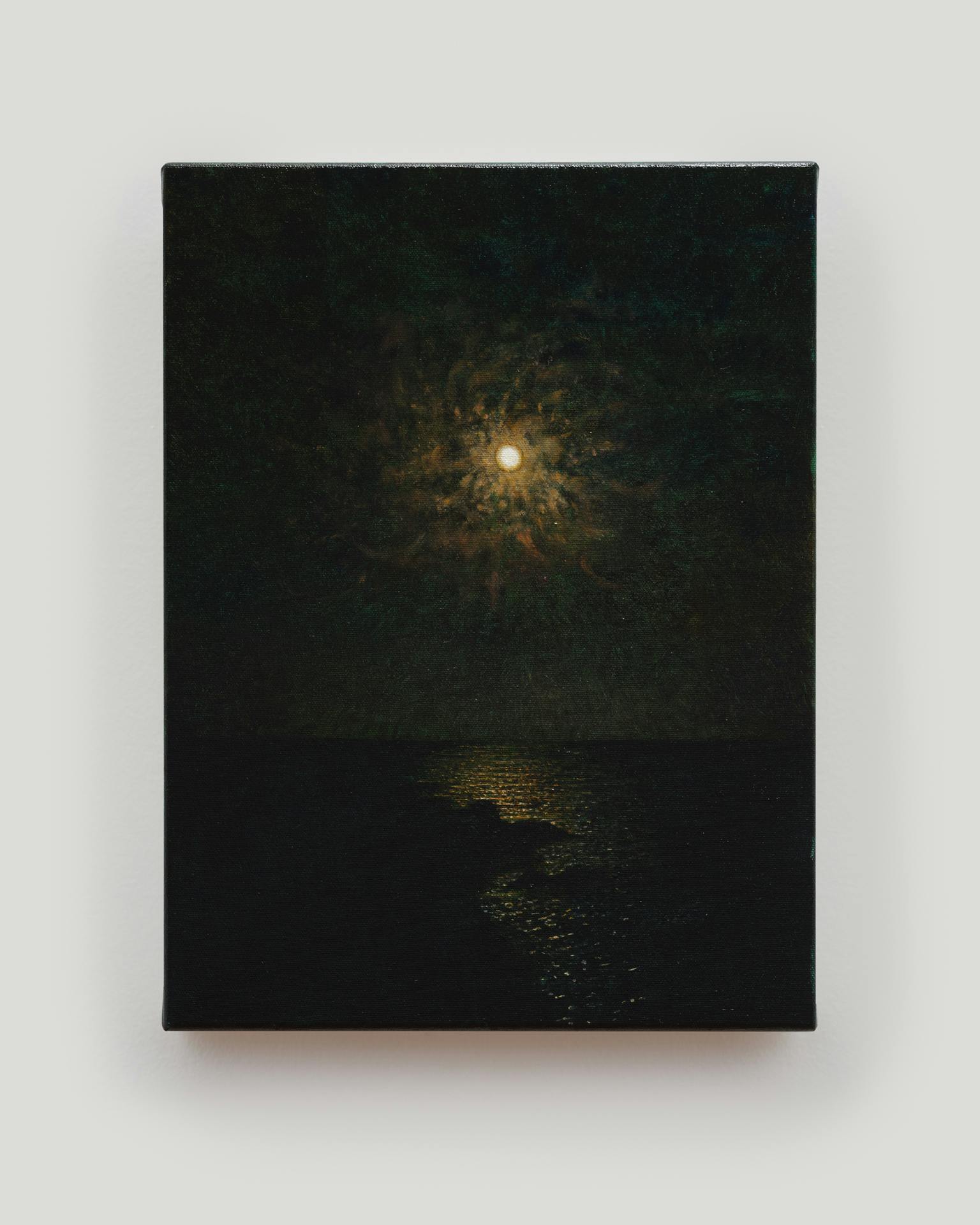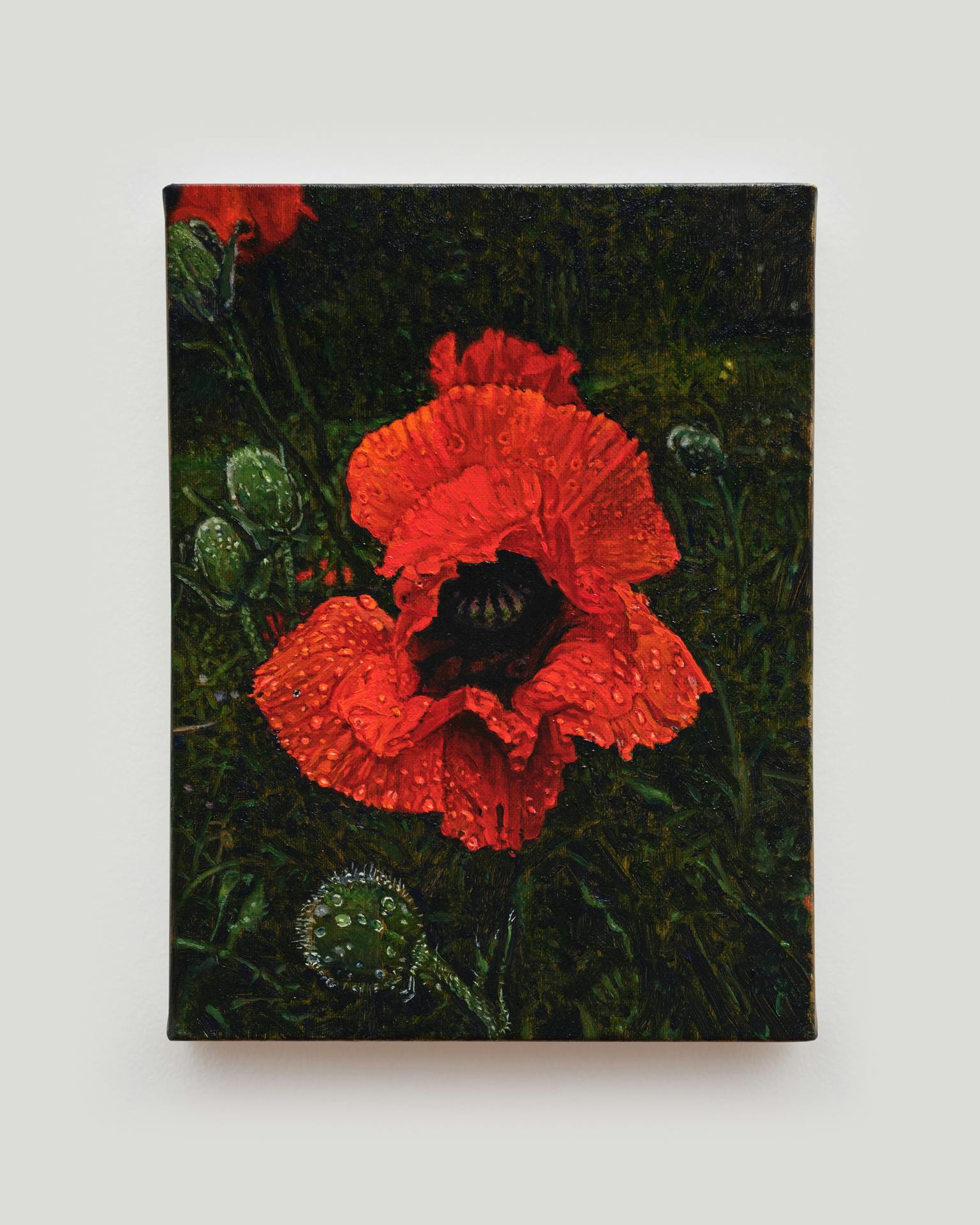
There’s a palpable familiarity in Nicholas Bierk’s darkly lit paintings, as if he scraped his paints directly from Caravaggio’s palette. In each of his small painted portals, faint light hums in the distance, the same hazy candlelit glow as seen in Caravaggio’s . As well as a homage to eminent painters of chiaroscuro – , , , also among them – he’s naturally drawn to depicting life’s darker corners; intimate scenes when the sun has set and the curtains are drawn.
The Silver Cord alludes to a remark made by minimalist painter Agnes Martin. She’d instruct her students to maintain their focus by ‘holding onto the silver cord’, the term also used by mystics in relation to dying or near-death experiences. The sudden passing of Nicholas's parents has lingered almost all of his adult life, spurring him to paint through his grief. Nicholas’s studio in Victoria, Canada is removed of the distractions Martin so adamantly scorned, the surrounding abundant nature and expanses of sea making it an idyllic environment for retaining concentration. He’s at his studio almost every day, jostling from one painting to the next, instilling painter remark that ‘painting pictures is simply the official, the daily work, the profession.’
Like Richter, Nicholas shares an appreciation for photography, often taking snapshots at night and allowing years to pass before they develop into paintings. Richter strayed away from directly copying, noting that ‘my pictures have little to do with the original photograph. They are totally painting.’ In Nicholas’s, you’ll notice a similar distancing from the original, each painting attuning to minuscule details like ruffled shadows of bed sheets, or tiny droplets of water on a poppy petal that an iPhone camera couldn’t pick up. Akin to some of his favourite contemporary painters and , who heighten contours by applying thick impasto oils, Nicholas uses a mottled, almost pointillist technique to create movement, further deepening their painterly sheen.
The paintings for The Silver Cord span four years of instinctive photographs he’s only now immortalising in paint. He attests ‘to offer questions rather than answers', each snapshot although specific to his surroundings, encourages a reminiscence for most who look at them. Still lifes of flowers are a mainstay, an ode to paintings by or , as well as moon-lit seascapes in reverence to or Whichever subject Nicholas chooses, he relies on the crop to reveal only a glimpse of the story.
References
1
2
3
4
5
6
7
8
9
10
11
12














